Iceland
Things to DO
Vík
Vík, a trading post since 1887, where all general services, restaurants, hotels, guesthouses, campsites and a swimming pool of the region Mýrdalur are available.
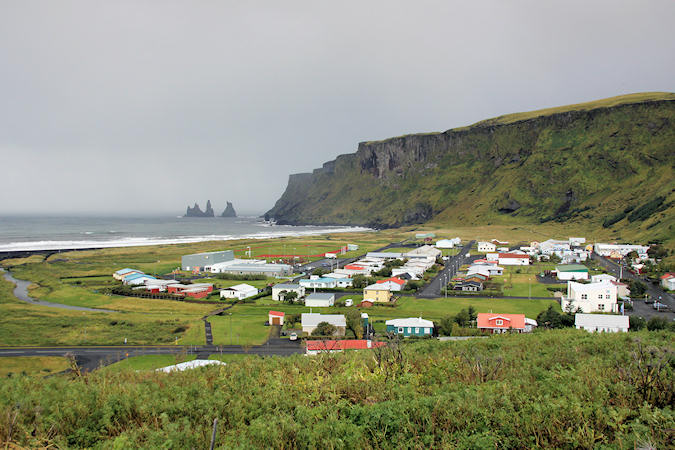 |
|||||
Reynisdrangar are basalt sea stacks situated near the village Vík.
The legend is that there were three trolls (Skessudrangur, Laddrangur and Langhamar) who were pulling a
three masted ship to the shore unsuccessfully, but they were caught by the sunlight at dawn and turned into
needles of rock.
Dyrhólaey, (The name literally means "door-hole"), is a 120-metre high promontory, not far from Vík.
The place got its name from the massive arch that the sea has eroded from the headland.
The first settler at Skogar was Thrasi Thorolfsson. He was a learned man and his character was
antiquated. He is said to have hidden a chest filled with gold coins in a cave behind the Skogafoss
Waterfall. On fine days, when the sun is shining, people say that his gold is glittering through the water.
Laugarvatn
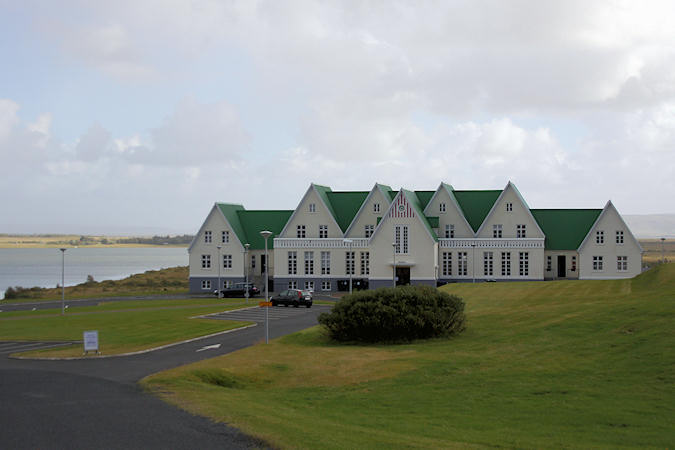 |
|||||
Laugarvatn started developing in 1928, when the first of many schools was built there. The
abundant thermal activity also triggered further growth with the construction of summer houses in its
proximity.
A house was built on top of one of the hot springs down by the lake for a steam bath. The excellent swimming
pool is popular among the inhabitants and the guests.
Gulfoss (The Golden Waterfalls) in the glacial river Hvita count among the world’s most
beautiful waterfalls.
On a sunlit day, the mist clouds surrounding the hammering falls are filled with dozens of rainbows, providing
an unparalleled spectacle of color and motion.
One of the many stories connected with the falls tells about the fight early in the 20th century for their
existence, when a foreign enterprise managed to contracted the rights to harness them for electrical production.
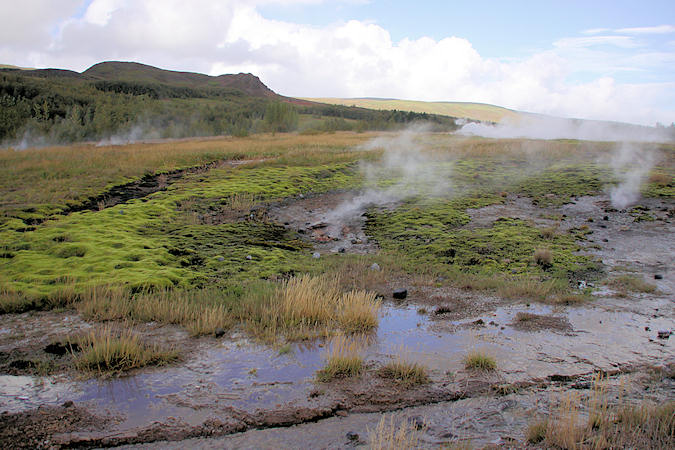 |
|||||
The spouting hot spring Geysir was claimed to be the biggest one in the world. Its fame spread and
other spouting hot springs elsewhere were consequently named Geysir or Geyser.
The old Geysir has been in retirement for decades, but when it was active its eruptions reached the height of
at least 80 m.
All around the old Geysir are more spouting hot springs, such as the ever lively Strokkur
(The Butter Churn), which erupts every 3-5 minutes.
Be Aware
Gulfoss and Geysir are a tourists-hubs; there will be at least 200 other people around; so go early in the morning to avoid these crowds
Þingvellir
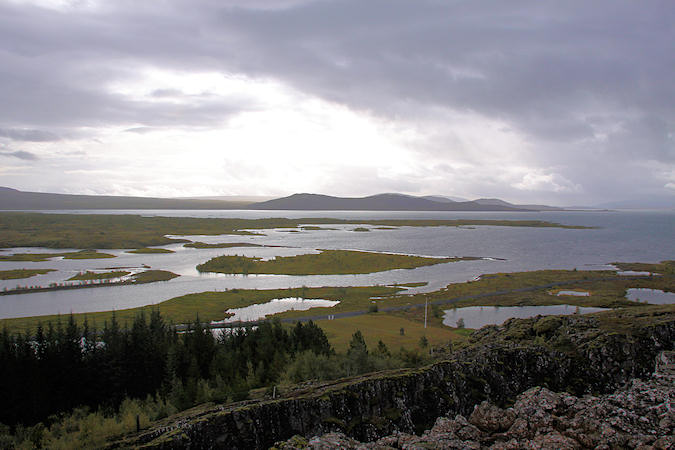 |
|||||
Thingvellir National Park, is a national park (since 1928) because of the special tectonic and
volcanic environment. The continental drift can be clearly seen in the cracks or faults which are traversing
the region, the biggest one, Almannagjá, being a veritable canyon. This causes also the often measurable
earthquakes in the area.
Whitin the park Þingvellir (Icelandic "Þing": parliament, "vellir": plains) is situated on the northern
shore of Þingvallavatn, the biggest lake of Iceland.
Shortly after the year 900, men started to think about putting together a general assembly for the settlers
of Iceland.
The foundation of the Icelandic parliament is said to be the founding of the nation of Iceland, and the
first parliamentary proceedings in the summer of 930 laid ground for a common cultural heritage and
national identity.
The Althing at Þingvellir was Iceland's supreme legislative and judicial authority from its establishment
in 930 for the duration of the Commonwealth, until 1262.
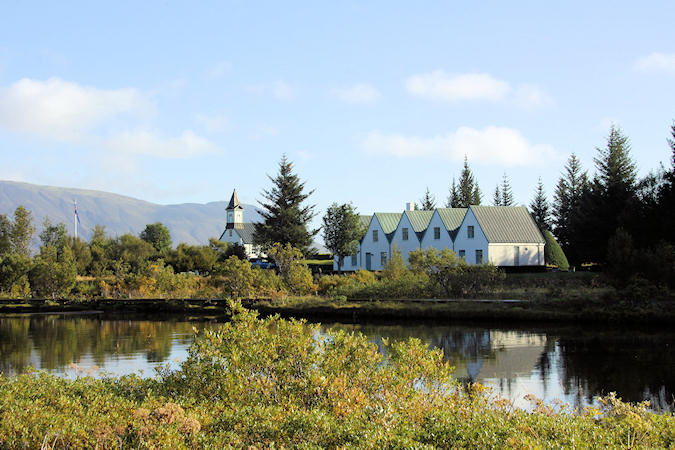 |
|||||
Logberg (Law Rock) was the focal point of the Althing and a natural platform for holding speeches.
The Inauguration and dissolution of the assembly took place at the Logberg, where rulings made by the Law
Council were announced, the calendar was confirmed, legal actions were brought and other announcements made
which concerned the entire nation.
Anyone attending the assembly was entitled to present his case on important issues from the Logberg
Drekkingarhylur (The Drowning Pool), where mothers of illegitimate children were drowned. It is sited
in the river Öxará in Almannagjá, a lava gorge, which with the Öxarárfoss Waterfall, is an
impressive sight.
Þingvallakirkja (Thingvellir Church) was built soon after the adoption of Christianity but the church that
stands there now was built in 1859.
Reykjavik
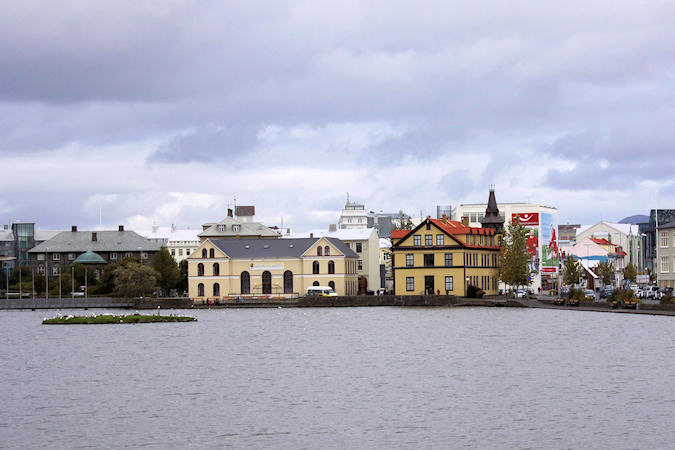 |
|||||
Although Reykjavik does hold a medieval history of some sort, little is known or remembered of
this period. Instead, it is the 18th century that most history books state as the time when an urban settlement
grew up here.
Houses were quickly built and an important wool industry began to thrive, bringing great wealth to the town
for several decades.
During the 19th century, residents of Iceland began to campaign for the independence of their country,
realising that Reykjavik was to be a key player in this cause.
The year of 1918 marked an important moment in Reykjavik history, with Iceland becoming known as a
sovereign country.
The colourful Old Harbour, which was built between the years 1913 and 1917 is where the majority of
marine activities, such as whale watching and puffin tours are concentrated; it's also home to the excellent
Víkin Maritime Museum.
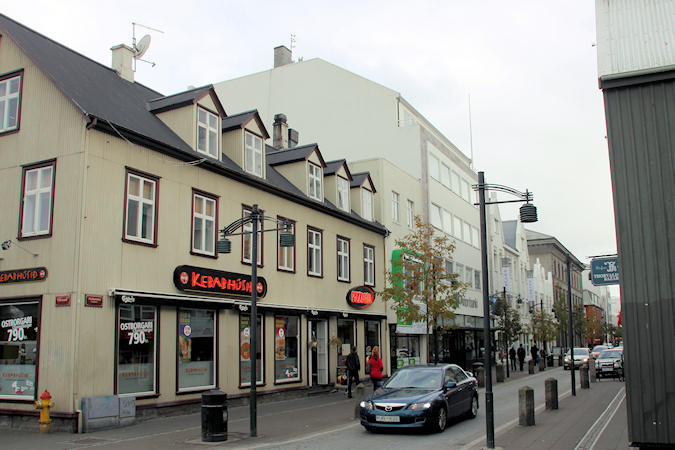 |
|||||
The main shopping street in Reykjavik city centre is without doubt the Langavegur, which is
brimming with clothing outlets, bookstores, endless gift shops and a good supermarket, along with an array
of eateries.
Situated in the centre of Reykjavík, Hallgrímskirkja is one of the city's best-known landmarks and is
visible throughout the city.
State Architect Guðjón Samúelsson's is said to have designed it to resemble the basalt lava flows of
Iceland's landscape.
It took 38 years to build the church. Construction work began in 1945 and ended in 1986.
The church houses a large pipe organ by the German organ builder Johannes Klais of Bonn